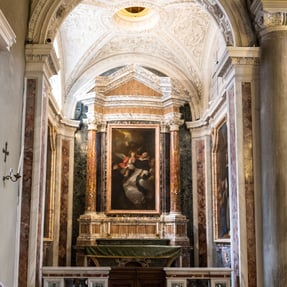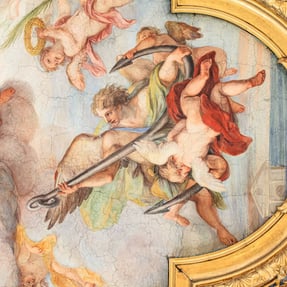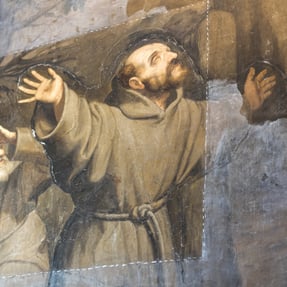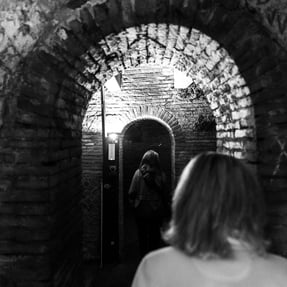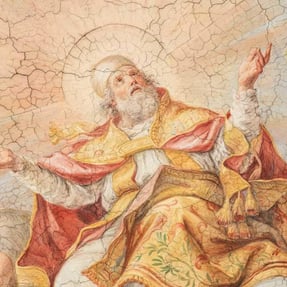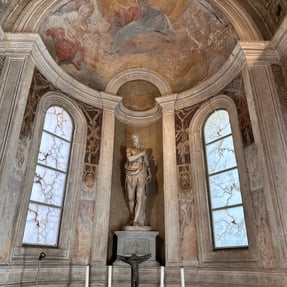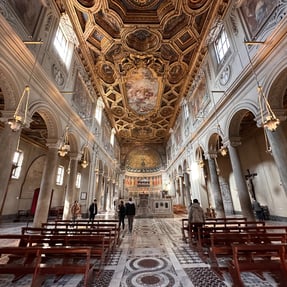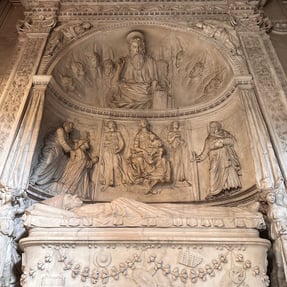Join us to Preserve Europe
rich cultural heritage
As the Radices Foundation, we are committed to preserving, restoring, and keeping alive Europe’s rich cultural heritage for future generations. We protect the artistic, historical, and intellectual achievements of past civilizations so that they are not forgotten, but continue to serve as a source of inspiration and identity.


Our Vision
Our Mission
As guardians of cultural memory, our first project—the restoration of the Basilica of San Clemente—preserves a universal heritage: where Antiquity, Christianity,
and the Middle Ages converse in stone,
we create a future through preservation.


Basilica San Clemente in Rome:
A gateway through the ages
The Basilica of San Clemente in Rome — a unique archive of European civilization, where Antiquity, early Christianity, and the Middle Ages converge in three superimposed layers is at the heart of the Radices Foundation’s first major project.
On the Roman ruins, a three-aisled basilica was built in 385 AD, dedicated to Saint Clement I († 97), the third pope after Peter. In its apse conch, one finds the Maria Regina — Rome’s oldest Madonna (8th century), inspired by Byzantine art — as well as the earliest known example of the Italian language, featured in the fresco cycle of the Clement legend (11th century). The tomb of Saint Cyril, highly venerated by the Orthodox Church, is also located here. San Clemente thus serves as a convergence point of various Christian traditions.
After the Norman destruction in 1084 AD, the present-day basilica was built and consecrated to Saint Clement in 1118. A highlight is the apse mosaic Crux florida, depicting Christ on the Tree of Life, entwined with vines, drawing the viewer into its symbolic richness. The Cosmatesque floor from the 12th century, a spiraling Opus Alexandrinum made of porphyry and serpentine, was financed by the Roman Astalli family. The Cappella di San Tommaso, adorned with Early Renaissance frescoes by Masolino da Panicale (1428), adds further artistic depth to the site.
Roman Mithraic sanctuary -
1st century AD
At the lowest level (about 12 meters below street level), there lies a Roman residential complex from the Imperial era. In 1867, archaeologists discovered a fully preserved Mithraeum here—an underground sanctuary dedicated to the Persian mystery cult of the bull god Mithras. The main altar features the Tauroctony: Mithras sacrificing the primordial bull, flanked by torchbearers Cautes and Cautopates.
Historical Heritage
“Where else in Rome or Europe can one admire such monumental layering, reaching back twenty centuries
into the depths of history?” – Archaeologist Giovanni Battista de Rossi (1822–1894)
Early Christian lower church -
4th century AD
Romanesque upper church -
11th century AD
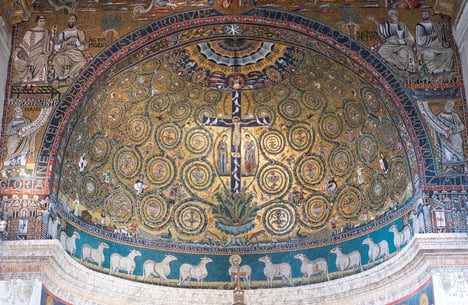

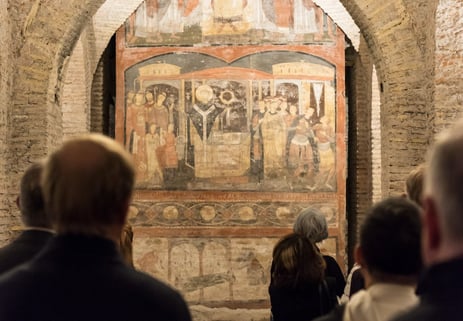

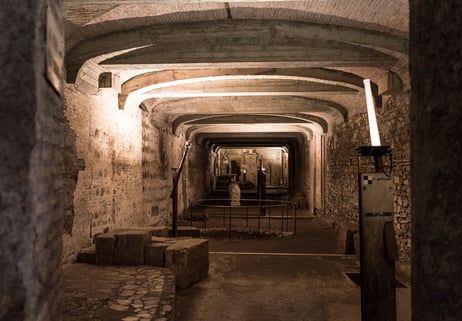


Radices Stiftung
*E-Mail-Adressen werden gemäß der DSGVO gespeichert und verarbeitet.
Langemarckstrasse 56a
53227 Bonn
GERMANY
Impressum
Contact Us!
© Radices Stiftung, 2025. All rights reserved.

